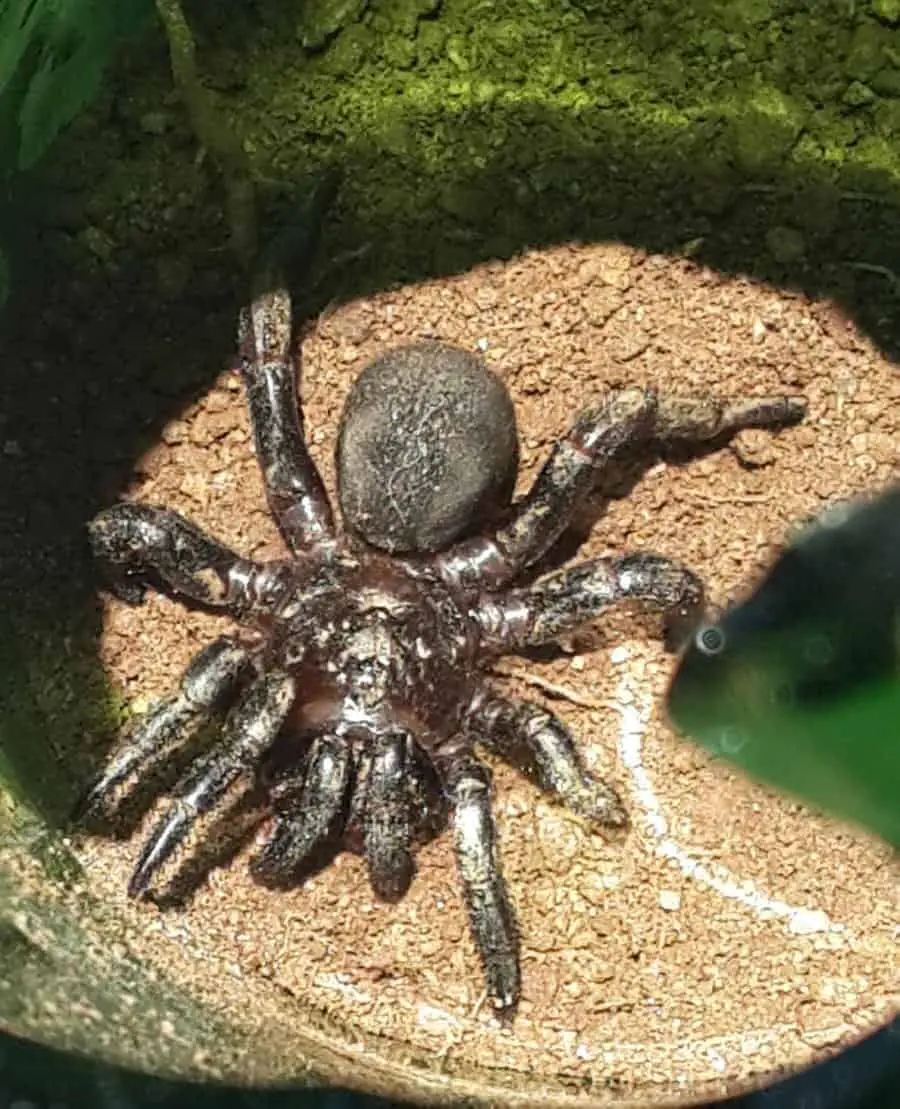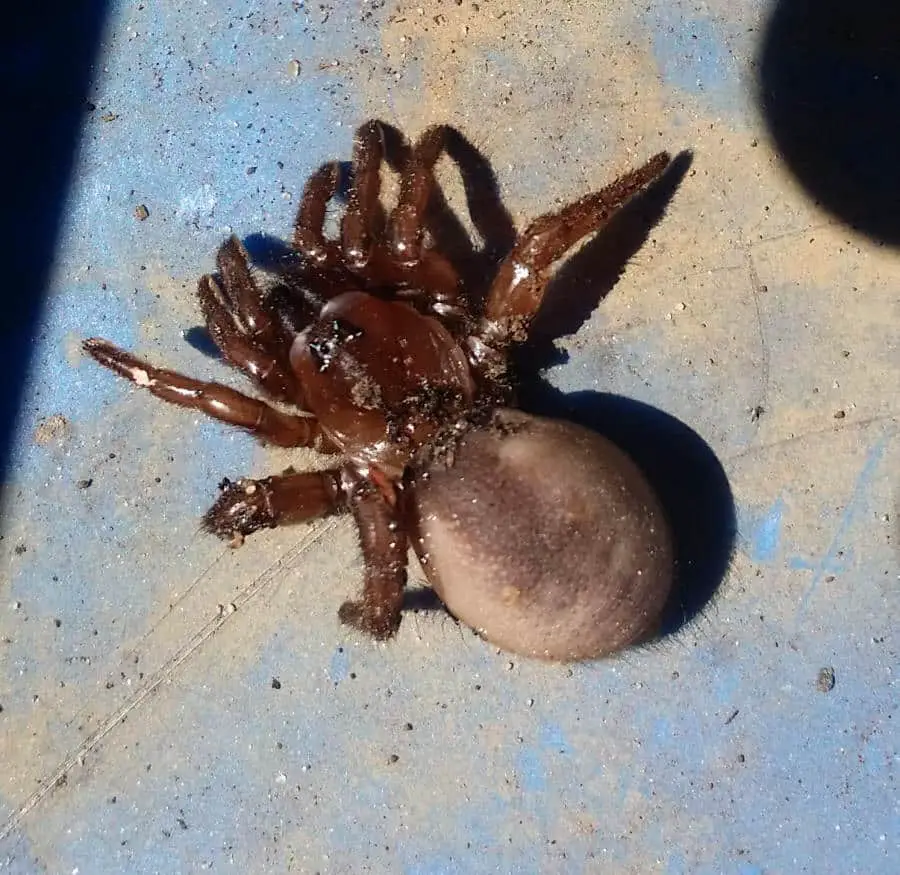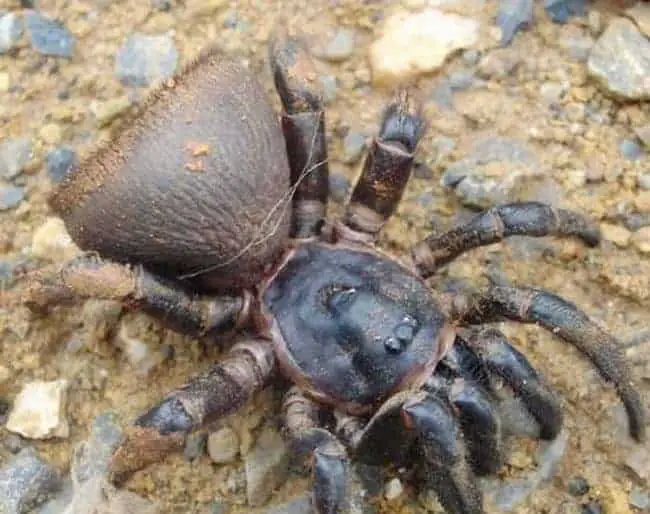The name Trapdoor spider covers several families and many different species. Trapdoor spiders can be distinguished from the more dangerous Funnel web spider by its brown or mottled markings. When in danger, a Trapdoor spider will freeze or flee whereas a Funnel web will rear back aggressively. Most trapdoor spiders, but not all, are misleadingly named, as not all species make a door for their burrows. For those species that do, these highly camouflaged entrances are almost undetectable, unless the door is open.
The common name covers several families of spiders, including the Idiopidae, Actinopodidae, Ctenizidae, Migidae and Cyrtaucheniidae. They include a wide variety of types, many of which are adapted to drier habitats.
They have short, blunt spinnerets. Males usually have a small double spur halfway along their first leg. Females are larger than males, and tend to be harder to identify to species level. These spiders tend to be quite timid.
One of the most common is the Brush Footed Trapdoor spider which has tufts of “tooth-ended” hairs on their feet which allow them to climb smooth, vertical shafts. Brush Footed Trapdoor spiders are also known as Bird Eating spiders.


Trapdoor spiders construct burrows lined by their silk and closed by a hinged door of silk, moss, and soil. There they lie in wait for passing prey, usually an insect; when the prey touches silken threads radiating out on the ground near the door, the spiders quickly open the door and seize it.
Closely related to Tarantulas, Trapdoor Spiders make up the family Ctenizidae. They are generally small, are harmless to humans, and are found in many warm climates. They also use their burrows for protection and as nest sites, the female spinning her egg sac for about 300 eggs in the burrow.
Young Trapdoor spiders stay in the burrow with their mother for some time. One group digs burrows in ground which is liable to flood. A turret built around the entrance keeps out water and if the burrow is flooded, the spider climbs to a chamber built to the side to try and survive until the water recedes.
Another group makes whistling sounds by rubbing flattened pegs on the pedipalp across spines at the base of the chelicerae. This whistling probably attracts mates.
Trapdoor spiders are not particularly harmful to man however, like Tarantulas, the tiny hairs on the legs of some species leave tiny red marks where the “toothed” hairs on the spiders’ feet have clung to the skin.
Mouse spiders are also a type of Trapdoor spider with huge chelicerae and may measure up to 35mm in body length. The aggressive female Mouse spider has large fangs and a high venom output and may harm humans.
Click here for more photos of Trapdoor Spiders.

Information and pictures were taken from children’s projects and where credited to that child does not claim to be original information. Where possible, permission to reproduce has been sought. Any infringement of copyright is purely unintentional.

